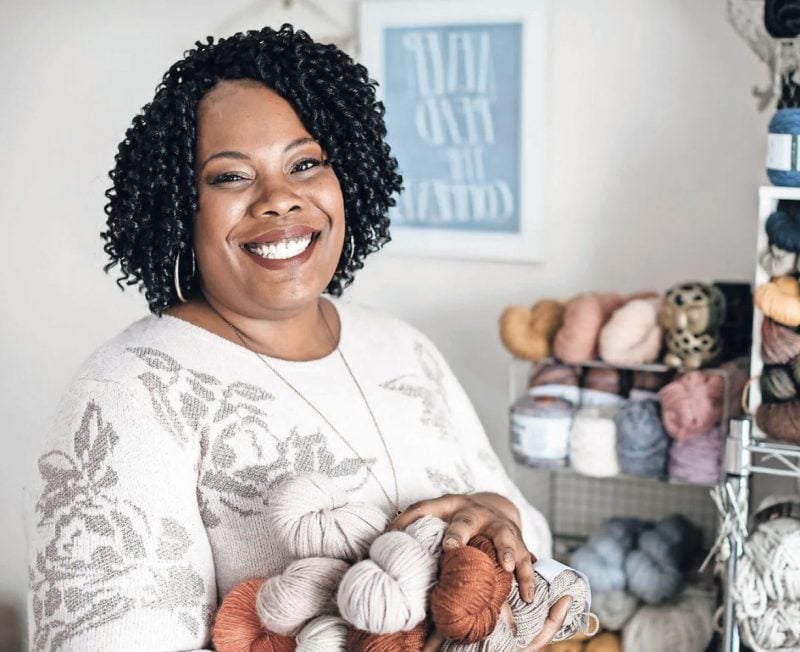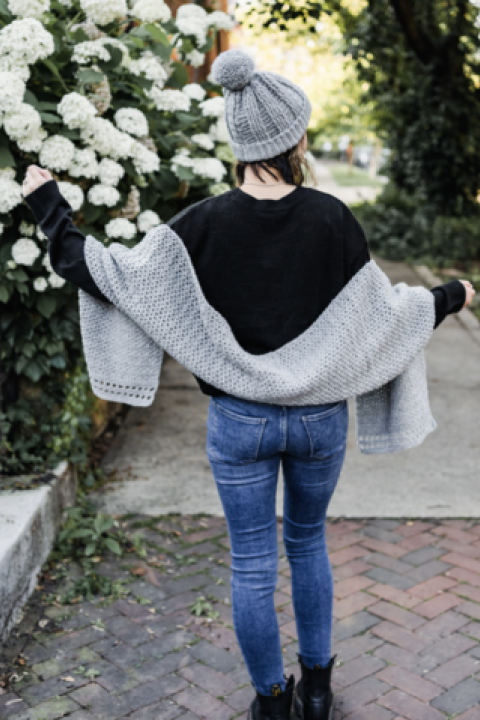Many beginner crocheters find learning to read crochet patterns very difficult. How do you decipher all of the abbreviations, punctuation, and special instructions? I surveyed the TLYC community and gathered many helpful tips for making crochet patterns easier to read.
This post contains affiliate links that support the content on TLYCBlog.com. All opinions are my own. Find my Privacy & Disclosures Policy here.
Pin it Now, Read it Later!
How To Read Crochet Patterns for Total Beginners
Crochet patterns are everywhere – on blogs, in digital pattern marketplaces, in books and magazines, and even on pamphlets in the craft store. Learning to read crochet patterns is invaluable – most patterns are exclusively written in abbreviations.

While learning to read patterns is tricky at first, it’s not impossible. Check out the list of tips below, then review my How to Read Patterns blog post HERE.
Top 10 Tips for Reading Crochet Patterns
1 // Buy the PDF Pattern
Many free crochet patterns are hosted on a blog. For the pattern designer to offer that pattern for free, the blog post will have images and paid ads throughout the post. These graphics can distract and frustrate those looking to follow complex instructions. My advice is to purchase a PDF version of the pattern. This allows you to load the pattern to a device or, better yet, print the pattern. Now you can read and mark up the pattern without the distraction of ads or images.
2 // Read the Entire Patterns First
Crochet patterns include a lot of information. From abbreviations to special stitches, pattern notes, and finishing steps, good pattern writers are thorough and explicit. Read the entire pattern, start to finish, to ensure you understand what you’re getting into.
3 // Have a Reference Document for Common Abbreviations and Pattern Standards
Even perfectly written patterns can be tricky for beginners to read. Consider having a quick reference guide to look up common abbreviations, stitches, and pattern standards. Keep this resource in your project bag or wallet and use it often while you’re still learning. You can pull info from my Learn to Read Crochet Patterns blog post, or check out this book and this resource. I also find the Craft Yarn Council to be a fantastic one-stop-shop for researching crochet.
4 // Don’t Skip the Notes Section
Pattern writers include a Notes section to catch all relevant instructions that don’t fit neatly into other sections. These notes add insight to the pattern, allowing the designer to share important info that can make the pattern easier to make and finish. Read the Notes section thoroughly, and reference it throughout the pattern making process.
5 // Research New Concepts & Stitches
I love crafty challenges and always look for new stitches and techniques to try in my crochet patterns. When I review a pattern for the first time, I like to highlight ideas that are new to me. For stitches, I check the Abbreviations, Special Stitches, and Notes sections of the patterns for an explanation. Techniques are often explained in the Notes section. If I can’t find them there, I check YouTube and practice them before I start the pattern.
6 // Mark or Highlight Your Size Throughout the Pattern
Patterns with multiple sizes often condense the pattern instructions alongside the other sizes. To make things easier on yourself, print the pattern and use a highlighter to identify the instruction written for the size you are making throughout the document.
7 // Pause At All Commas, Semicolons, and Periods
Punctuation is used in crochet patterns, just like in spoken language. Each comma, semicolon, and period marks a notable transition in the instructions. Treat these punctuation marks as a pause or stop when reading crochet patterns. You are often meant to complete the information before these marks before proceeding to the next set of instructions.
8 // Use a Post-It to Mark Your Place in the Pattern
Another great reason to buy and print digital patterns is to help keep your place. If you’re anything like me, you often pick up and put down crochet patterns. I like to place a Post-It note on the instructions where I left off so I can easily return to my place when I jump back into the project. I move the note as I go and put reminders on the Post-It to help me orient myself in the pattern. Upgrade to a chart reader, which is specially designed to help you keep your place in a printed pattern.
9 // Mark Patterns with Erasable Pens
My friend Melissa put me onto erasable pens many years ago, and I can’t thank her enough. These FriXion retractable gel pens write incredibly well and erase easily. I like to use them to mark out instructions I’ve completed, make alteration notes, and mark pattern repeats in the margins. If I make mistakes, I can easily erase them and don’t have to worry about the ink disappearing.
10 // Be Patient with Yourself
Learning something new is rarely easy. And reading is not a natural human skill. The only way to learn how to read crochet patterns is through repetition and reading to understand (not just to execute). It’s unlikely that you’ll learn to read from the very first pattern you pick up. Find a How to Read Patterns resource, try patterns from multiple designers, and practice, practice, practice. Give yourself some grace while learning – your AHA! moment is coming. And if you need help, Google confusing instructions, connect with a local yarn store for a quick answer or private lesson, or ask a collective of helpful makers like my TLYC Makers Facebook Group.
Learning to read crochet patterns opens a world of possibilities for makers and aspiring designers. Invest in your crochet experience by incorporating this precious skill. With a little practice, you’ll be reading crochet patterns like a pro in no time!
Do you have advice for beginners who want to learn to read crochet patterns? Drop some knowledge in the comments and let’s all help each other!
Read This Next: How to Read Crochet Patterns for Total Beginners LINK








